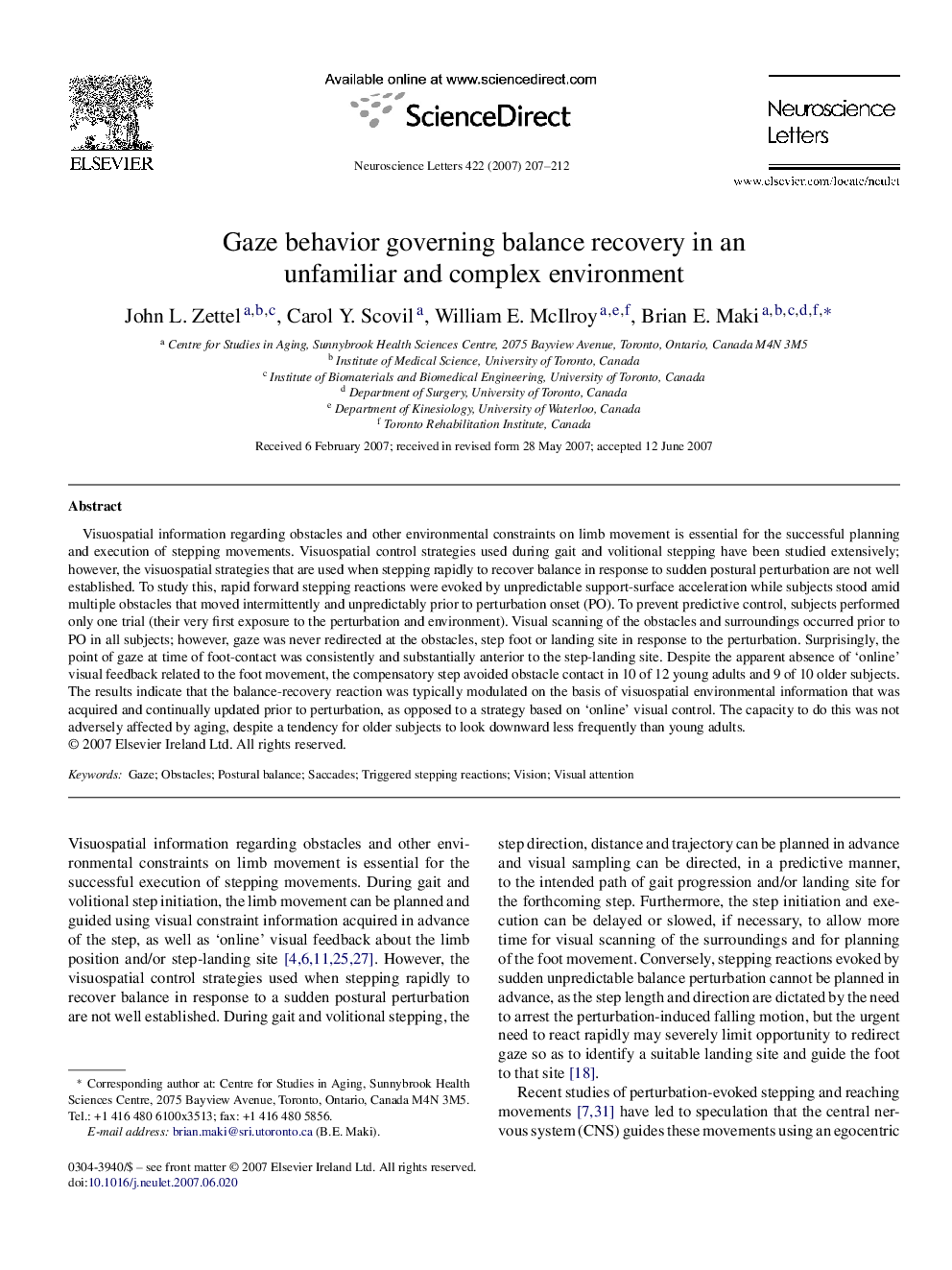| Article ID | Journal | Published Year | Pages | File Type |
|---|---|---|---|---|
| 4349373 | Neuroscience Letters | 2007 | 6 Pages |
Visuospatial information regarding obstacles and other environmental constraints on limb movement is essential for the successful planning and execution of stepping movements. Visuospatial control strategies used during gait and volitional stepping have been studied extensively; however, the visuospatial strategies that are used when stepping rapidly to recover balance in response to sudden postural perturbation are not well established. To study this, rapid forward stepping reactions were evoked by unpredictable support-surface acceleration while subjects stood amid multiple obstacles that moved intermittently and unpredictably prior to perturbation onset (PO). To prevent predictive control, subjects performed only one trial (their very first exposure to the perturbation and environment). Visual scanning of the obstacles and surroundings occurred prior to PO in all subjects; however, gaze was never redirected at the obstacles, step foot or landing site in response to the perturbation. Surprisingly, the point of gaze at time of foot-contact was consistently and substantially anterior to the step-landing site. Despite the apparent absence of ‘online’ visual feedback related to the foot movement, the compensatory step avoided obstacle contact in 10 of 12 young adults and 9 of 10 older subjects. The results indicate that the balance-recovery reaction was typically modulated on the basis of visuospatial environmental information that was acquired and continually updated prior to perturbation, as opposed to a strategy based on ‘online’ visual control. The capacity to do this was not adversely affected by aging, despite a tendency for older subjects to look downward less frequently than young adults.
